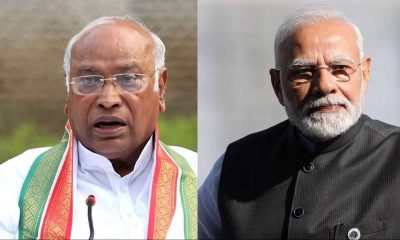India News
Gandhi vs Jinnah

[vc_row][vc_column][vc_column_text]Sheela Reddy’s book on his traumatic personal life is also a revisionist look at the man better known as the Mahatma
By Binoo K John
In India’s nationalistic narrative Mohammed Ali Jinnah never got the place he deserved which was totally usurped by Mohandas Gandhi. Few nationalist historians have dared to cast a cynical look at Gandhi’s life and machinations and almost all of them have chosen to paper over the many warts in Gandhi’s personal, professional and nationalistic life.
In that sense senior journalist Sheela Reddy’s recently-published Mr and Mrs Jinnah (Penguin) is a welcome relief and offers a daring and clinical insight intothe life of two of the national movement’s biggest stalwarts. The book’s focus is on Jinnah’s traumatic married life to Ruttie, the teenaged daughter of a Parsi upper class family of Mumbai but often the author casts a bright light into deliberately darkened areas of Gandhi’s life which we opted not to see or dwell upon for long. Such acts of Gandhi might be worth a relook.
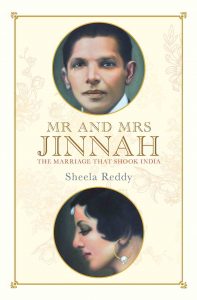 After all that we have read about Gandhi’s conciliatory attitude towards minorities in the later part of the national movement, his early hatred and suspicion of Muslims is shocking even now as we read it in this book. When Motilal Nehru’s elder daughter Nan fell in love with Syud Hossain, an aristocratic and dashing young Muslim who was editor of Independent and thus had free access to Anand Bhawan, all hell broke loose. In that chaotic and liberal household, where Muslims were considered part of the family, it is no wonder that the beautiful Nan and the attractive Syud fell in love and were almost living together. Motilal espoused liberalism and modernity but when it came to his daughter marrying a Muslim he wavered. Unlike a liberal Motilal had betrothed her to another Hindu aristocrat’s son when she was just 12 or 13 but Nan, the carefree daughter of a liberal household, had other ideas. She thought that marrying Syud wouldn’t pose any problems in that ‘modern’ household.
After all that we have read about Gandhi’s conciliatory attitude towards minorities in the later part of the national movement, his early hatred and suspicion of Muslims is shocking even now as we read it in this book. When Motilal Nehru’s elder daughter Nan fell in love with Syud Hossain, an aristocratic and dashing young Muslim who was editor of Independent and thus had free access to Anand Bhawan, all hell broke loose. In that chaotic and liberal household, where Muslims were considered part of the family, it is no wonder that the beautiful Nan and the attractive Syud fell in love and were almost living together. Motilal espoused liberalism and modernity but when it came to his daughter marrying a Muslim he wavered. Unlike a liberal Motilal had betrothed her to another Hindu aristocrat’s son when she was just 12 or 13 but Nan, the carefree daughter of a liberal household, had other ideas. She thought that marrying Syud wouldn’t pose any problems in that ‘modern’ household.
After their affair became known, Nan was promptly despatched to Gandhi’s ashram for a cleansing ritual and for dissuading her from marrying a Muslim. Gandhi ran the ashram like a prison and had “bizarre and primeval” rituals. Ashramites lives in utter fear of Gandhi. Gandhi had by then brutally punished a young lady who had fallen in love with another ashramite (not a Muslim) and personally cut off the girl’s beautiful long silky hair, an act which can today be considered criminal.
As part of Nan’s cleansing and ‘cultural reorientation’ Gandhi lectured the sister of the future prime minister about the evil nature of Muslims. She wrote: “He told me when I was at the ashram that this event (Syud affair) had shaken his belief in Mussalmans… what right had you to allow yourself even for a minute to look with love at a Mussalman.” Then later. “Out of nearly 20 crores of Hindus couldn’t you find a single one who came up to your ideals—but you must needs pass them all over and throw yourself into the arms of a Mohammeddan!!!” Nan who was nonplussed by all this wrote: “Poor man! To him it is inconceivable for a Hindu and Mussalman to marry and live happily.”
This statement by Nan about Gandhi’s real beliefs about Muslims can still shock us. Gandhi later confronted Syud and asked him how he dared make love to a Hindu girl who he ought to have looked upon as a sister. Syud, rather flummoxed, said: “Well, I did look upon her as a sister in the beginning.” Neither Syud nor Nan was ever taught to look at people as Hindu, Muslim or Christian. It was Gandhi who tried to ingrain this thought into them.
In fact, Reddy points out in detail that all the characters in the early part of the anti-colonial movement were brought up in extremely liberal, modern atmospheres and most of them rebelled against brahmanical social mores. Aghorenath Chattapadhyay, father of Sarojini Naidu, for instance, flung his sacred thread into the Ganges at 14, to rebel against caste. Brought up in an entirely cosmopolitan atmosphere, Sarojini claimed proudly that theirs “was a home of Indians and not of Hindus or Brahmins”. Compared to all this, Gandhi’s ashram was a patriarchal heaven, a medieval, casteist monastery where ashramites were regularly chastised on moral, religious grounds.
Compared to Gandhi’s overtly Hindu and monastic attitude infused with vague notions of celibacy and vegetarianism, Jinnah was completely modern, secular, liberal and had a worldview which now looks similar to that of Nehru. Jinnah completely ignored or rebelled against his own Muslim Khoja orthodoxy and superstitions. “He not only defiantly dressed like a British gentleman but openly smoked, drank, ate pork and, more seriously, insisted on putting his sister into a convent boarding school despite opposition from his community”, Reddy writes.
Jinnah’s later move towards the Muslim right was largely due to the opposition he faced from Gandhi within the Congress and, of course, other pro-Hindu factions like the Hindu Mahasabha, etc. Jinnah, as is known, had made various attempts to bring the Muslim League close to the Congress but was rebutted by the government and also by Gandhi on various occasions. In 1915, for instance, Jinnah brought the Muslim League close to the Congress by holding the session at the same time as the Congress’s in Bombay, but the proceedings were disrupted.
All details of the Gandhi-Jinnah conflict are known but Jinnah’s role in trying to bring together a Hindu-Muslim political conciliation has been underplayed. Jinnah’s Delhi Proposals were accepted by the Congress but was fiercely opposed by the Hindu Mahasabha at the all-party conference. “Jinnah’s personality dominated both the issues in the Assembly and in the All Parties Conference. Never have I admired him more than now. What dignity and courage in the midst of suffering—what patience, persuasion and real statesmanship he showed during the most trying period of the prolonged conference,” Sarojini Naidu wrote in February1928 when she was in the inner circles of the Congress.
In contrast, such glowing references to Gandhi by senior Congress leaders are rare to find. In fact, during the early phase of the struggle it was Jinnah who had the guts to take the British head on while Gandhi was extremely conciliatory. Once Jinnah joined the anti-Rowlatt agitation led by Gandhi, he resigned from the assembly and plunged headlong into it. “It was Jinnah whom the government feared, considering him a far more dangerous power centre than Gandhi. Unlike Gandhi who sent out mixed signals about his approach to the British government, even volunteering to recruit Indian soldiers for the War effort without placing any conditions, Jinnah took on the British frontally,” Reddy writes.
Gandhi saw in Jinnah both a threat and a rival, so treated him with disdain. Once when Jinnah wrote him a nice letter from abroad asking Gandhi for news about political developments, Gandhi gave him gratuitous advice suggesting that he learn Gujarati and Hindi and asking Ruttie be sent to spinning classes!
Reddy’s book is evidence that in our nationalistic pride and hurt about the formation of Pakistan we failed to properly understand the role that Jinnah had played in trying for a united Muslim-Hindu political unity, before he was pushed to a corner and went the other way. Reddy’s book is a serious attempt to look dispassionately at the role that Jinnah played and for once keep Gandhi aside in the narrative of the national movement, so that a we can get a better view of Jinnah the man and leader, minus the blinkers.[/vc_column_text][/vc_column][/vc_row]
2024 Lok Sabha Elections
Bollywood actor Neha Sharma campaigns for her father Ajit Sharma in Bhagalpur, Bihar
The Bollywood actor posted a video on her Instagram handle which showed her journey through various districts of Bihar, including Kishanganj, Banka, Purnea and Katihar. She was dressed in a traditional salwar kameez and was seen greeting and encouraging the public to cast their votes.
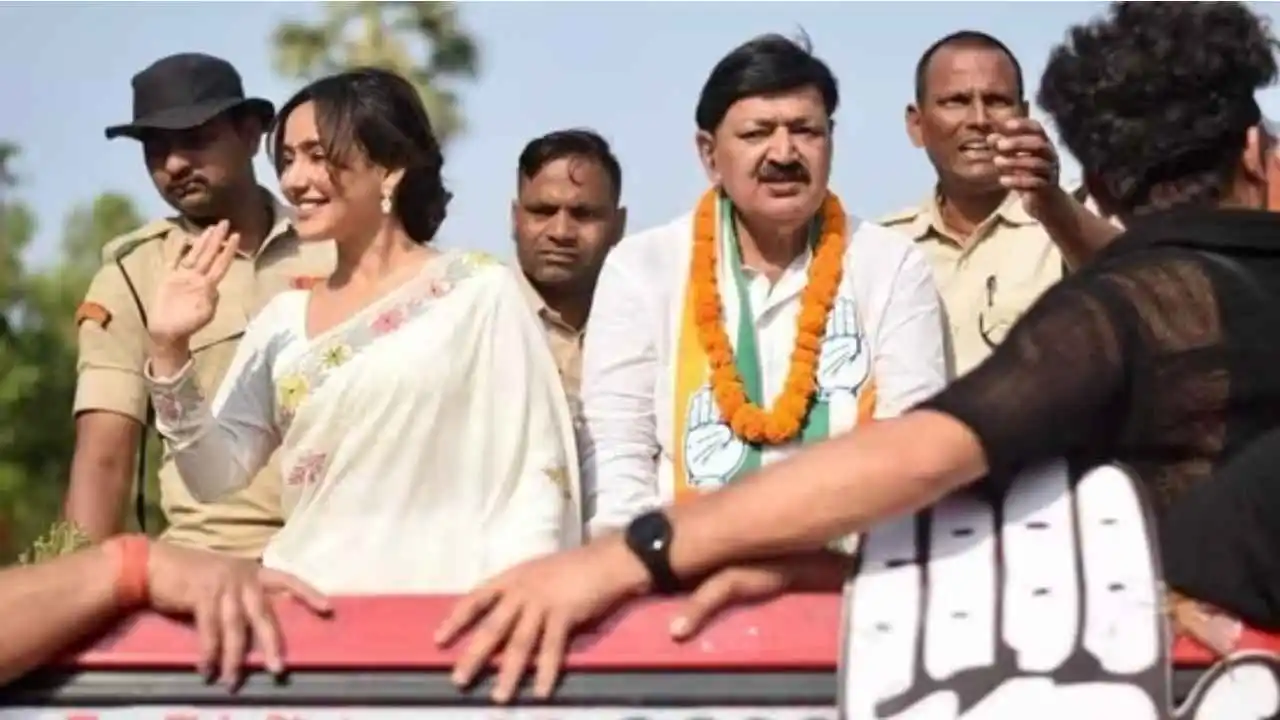
Bollywood actor Neha Sharma’s recent participation in a roadshow in Bihar has taken the internet by storm. Sharma, known for her roles in films like Tum Bin 2 and Crook, was seen supporting her father, Ajit Sharma, who is contesting from Bhagalpur Lok Sabha seat on a Congress ticket. The roadshow came amid speculations that the actor might enter politics. But, it is now clear that she was just campaigning for her father.
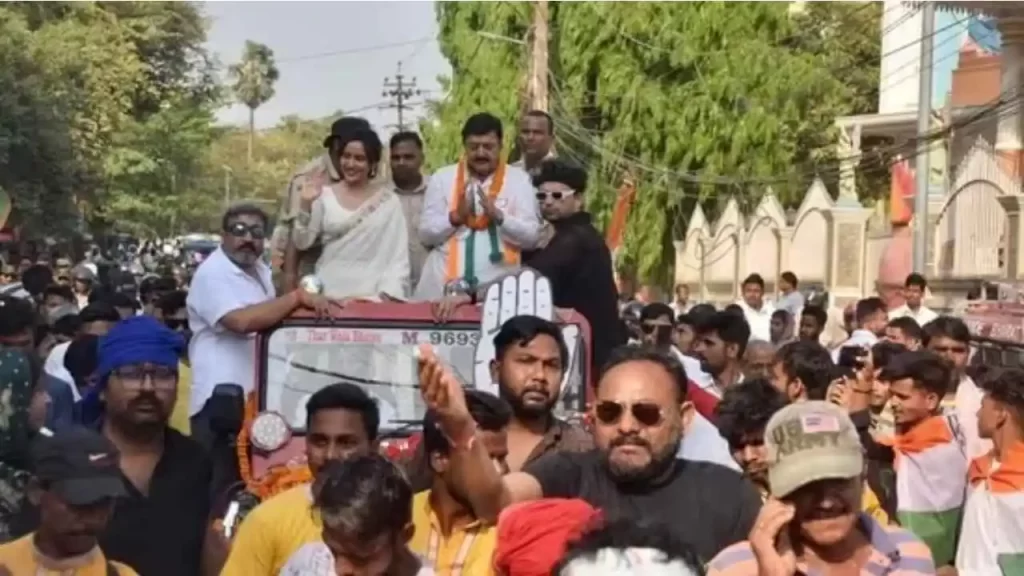
The Bollywood actor posted a video on her Instagram handle which showed her journey through various districts of Bihar, including Kishanganj, Banka, Purnea and Katihar. She was dressed in a traditional salwar kameez and was seen greeting and encouraging the public to cast their votes.
The actor received a warm reception and love from a large crowd in Pirpainti and Kahalgaon during her roadshow. She wrote on Instagram that it is said when someone gives one a place in their heart, then they live there forever. She said her heart is full of all the love and support she was receiving from the people. She thanked the people for the warm welcome she got in Pirpainti and Kahalgaon. Aapka pyar sar ankhon par.
Another video, circulating on social media showed the actor actively participating in her father’s election campaign in Bhagalpur. The election to the Bhagalpur Lok Sabha seat is set to take place in the 2nd phase on April 26. Ajit Sharma is representing the Congress and is up against JDU’s Ajay Kumar Mandal in this seat.
Earlier, there had been rumours and speculations that Neha Sharma might join politics. But many reports have clarified that she is not making her political debut yet. The Bollywood actor had been offered the opportunity to join politics by her father Ajjit Sharma but she is currently focusing on her acting career.
Education
Farmer’s son Nilkrishna Gajare Nirmalkumar from Maharashtra scores 100 NTA score in IIT-JEE Mains 2024
Nilkrishna Gajare’s father is a farmer and had to discontinue his own education after Class 12 as he faced financial difficulties. Gajare faced financial challenges growing up. However, his unwavering dedication and strategic approach to preparation set him apart from the crowd.
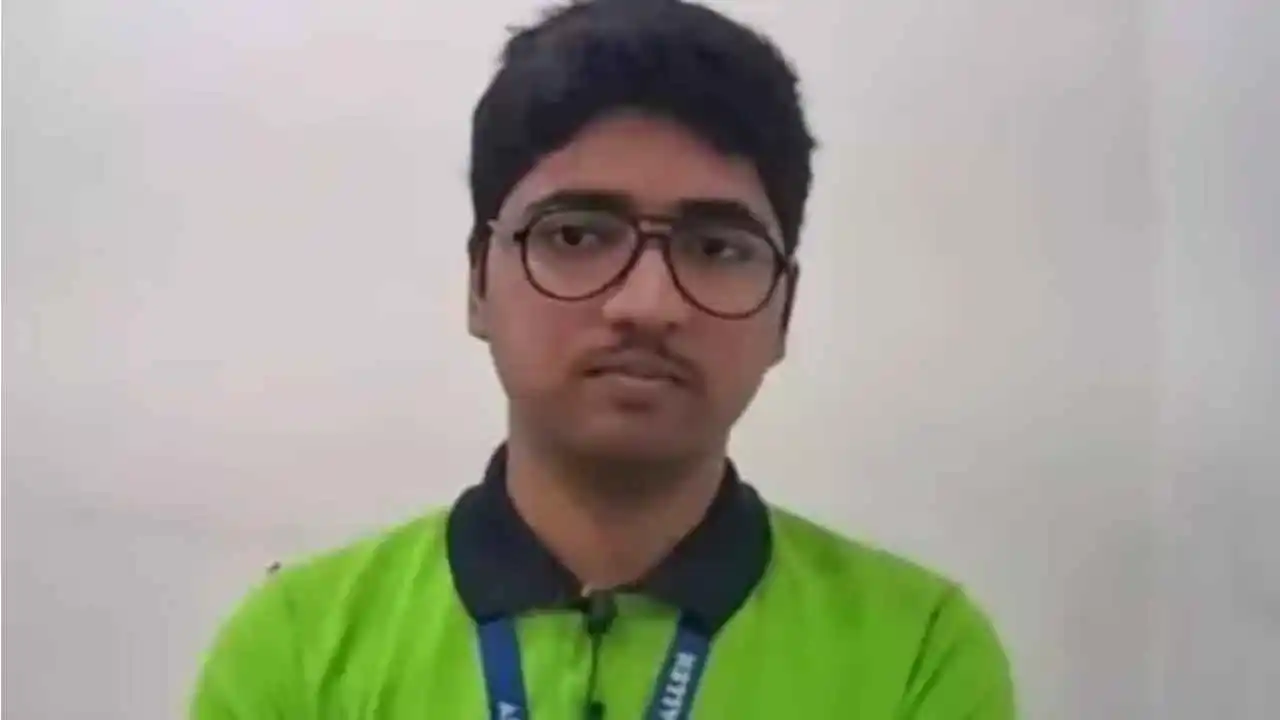
Nilkrishna Gajare, who hails from Maharashtra’s Washim, achieved an extraordinary feat by securing a perfect score of 100 in the JEE Main 2024 examination. His journey from humble beginnings to the pinnacle of success is a source of inspiration for many people.
Nilkrishna Gajare’s father is a farmer and had to discontinue his own education after Class 12 as he faced financial difficulties. Gajare faced financial challenges growing up. However, his unwavering dedication and strategic approach to preparation set him apart from the crowd, which resulted in his remarkable achievement of emerging as topper of one of India’s toughest Engineering entrance exams.
Nilkrishna Gajare had a strategic plan that helped him succeed in IIT-JEE 2024. According to Nilkrishna persistence is important and one should never stop trying until they understand a topic. He said being curious and asking questions are important traits of a good student. He said one should not be ashamed of asking questions.
Nilkrishna spent around 10-15 hours every day studying on his own for the JEE Main exam. He mentioned that he used his class notes for Physics and Physical Chemistry. For organic chemistry and inorganic chemistry, he relied on both notes and practice questions.
As for Mathematics, he believed that practicing regularly was the most important thing for him. Other interests of Nilkrishna include archery. He has participated at both state and national levels, and he finds joy in the sport. He said archery helps him understand the importance of focusing his attention on his goals. Nilkrishna likes watching movies and said they are a great source of enjoyment and relaxation.
He likes to watch a movie after exams and occasionally treats himself to one each week too. Gajare aims to keep up the pace for the JEE-Advanced exam and hopes to get into the IITs. He said he wants to secure admission in IIT-Bombay in the computer science branch.
2024 Lok Sabha Elections
Lok Sabha elections: Samajwadi Party chief Akhilesh Yadav files nomination from Kannauj
The Samajwadi Party has announced Akhilesh Yadav as its official candidate for the Kannauj Lok Sabha seat today
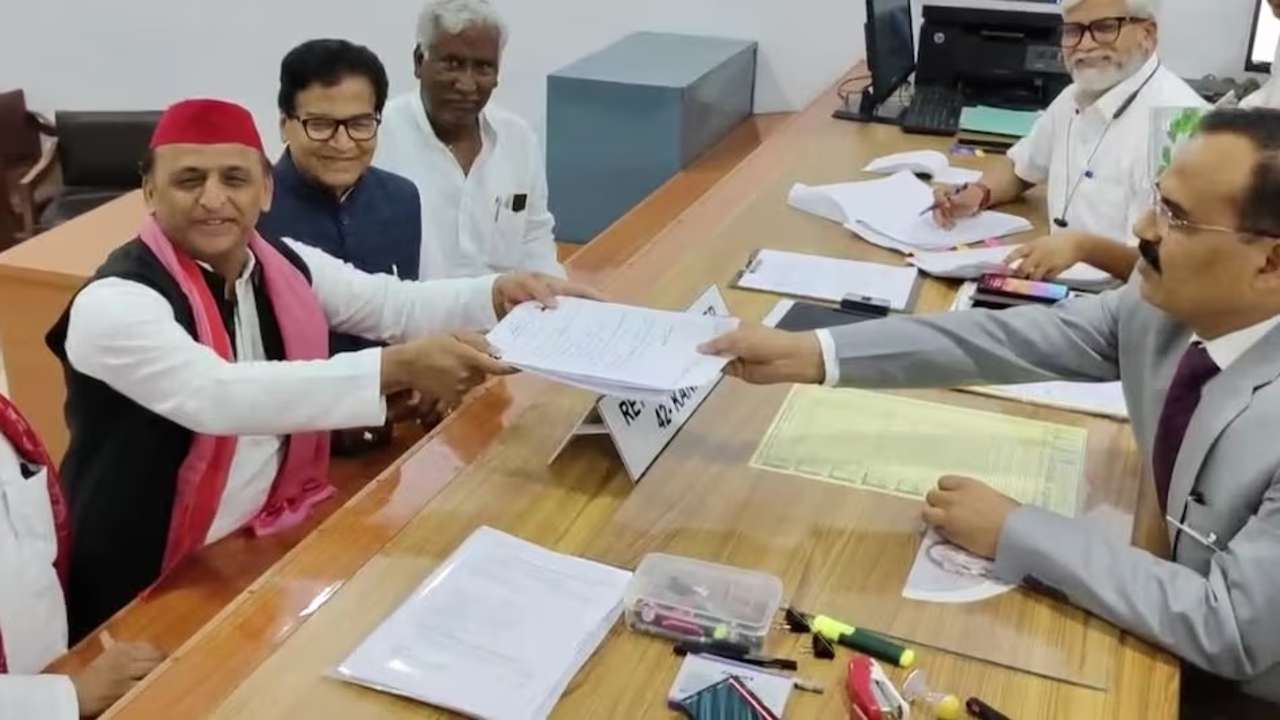
Samajwadi Party (SP) chief Akhilesh Yadav, submitted his nomination for the Kannauj Lok Sabha constituency ahead of tomorrow’s second round of voting. In front of Ram Gopal Yadav and other party leaders, the chief of the SP, who had previously contested the seat in 2000, 2004 and 2009, submitted the nomination.
Speaking with media, Ram Gopal Yadav said that SP would win the seat by a huge margin. The BJP candidate might lose his deposit in the seat, he said.
The Samajwadi Party has completely reversed its earlier plan to field former Mainpuri MP Tej Pratap Singh Yadav as their candidate, which is a significant political development.
Earlier, Akhilesh Yadav told reporters, people will find out when the nomination takes place, in reference to the speculations that he will contest for the seat. The historic victory of Kannauj is the subject of inquiry.
The former chief minister continued, the people have decided that the India bloc is coming as the future and the BJP will be history in this election.
Notably, elections for the Kannauj seat are scheduled for May 13, which would intensify the political drama that is now playing out in Uttar Pradesh. Previously regarded as the Samajwadi Party’s stronghold, the seat was lost by the party in the 2019 election when Subrat Pathak of the BJP won with a resounding victory.
The candidates competing for the following Uttar Pradesh seats will find out their destiny in the second round of voting, which is scheduled for tomorrow, Amroha, Meerut, Mathura, Baghpat, Aligarh, Ghaziabad, Gautam Buddh Nagar, and Bulandshahar.
Notably, two Bollywood celebrities running as BJP candidates in the second round are Hema Malini from Mathura and Arun Govil from Meerut. There are 91 contestants from UP competing in the second phase.
The seats in Gautam Buddha Nagar and Mathura are up for grabs, with a maximum of 15 applicants per seat. In Bulandshahr, six candidates are vying for the presidency. There are twelve contenders running in Amroha, eight in Meerut, seven in Baghpat, and fourteen in Ghaziabad and Aligarh.
1,67,77,198 votes will decide these candidates’ fates.
-

 India News11 hours ago
India News11 hours agoLandslide hits Arunachal Pradesh, highway linking Indo-China border affected
-

 Education9 hours ago
Education9 hours agoFarmer’s son Nilkrishna Gajare Nirmalkumar from Maharashtra scores 100 NTA score in IIT-JEE Mains 2024
-
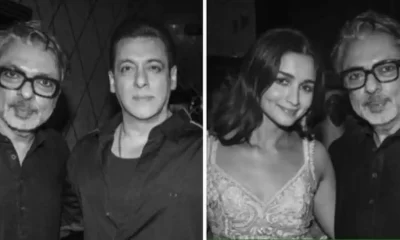
 Entertainment10 hours ago
Entertainment10 hours agoBollywood stars Salman Khan, Alia Bhatt, Rekha, Sonakshi Sinha, Aditi Rao Hydari attend Sanjay Leela Bhansali’s Heeramandi premiere
-

 India News11 hours ago
India News11 hours agoTamannaah Bhatia summoned in illegal IPL streaming app case, to appear before cyber cell on April 29
-

 2024 Lok Sabha Elections10 hours ago
2024 Lok Sabha Elections10 hours agoBihar: Election Commission extends voting timings for 4 Lok Sabha seats due to heatwave
-

 Cricket news11 hours ago
Cricket news11 hours agoIPL 2024: Rishabh Pant, Axar Patel score half centuries as Delhi Capitals beat Gujarat Titans by 4 runs
-
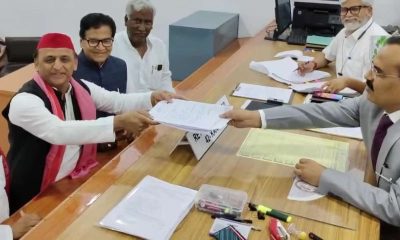
 2024 Lok Sabha Elections9 hours ago
2024 Lok Sabha Elections9 hours agoLok Sabha elections: Samajwadi Party chief Akhilesh Yadav files nomination from Kannauj
-

 Cricket news4 hours ago
Cricket news4 hours agoTelugu superstar Mahesh Babu meets SRH captain Pat Cummins, says it is an absolute honour









